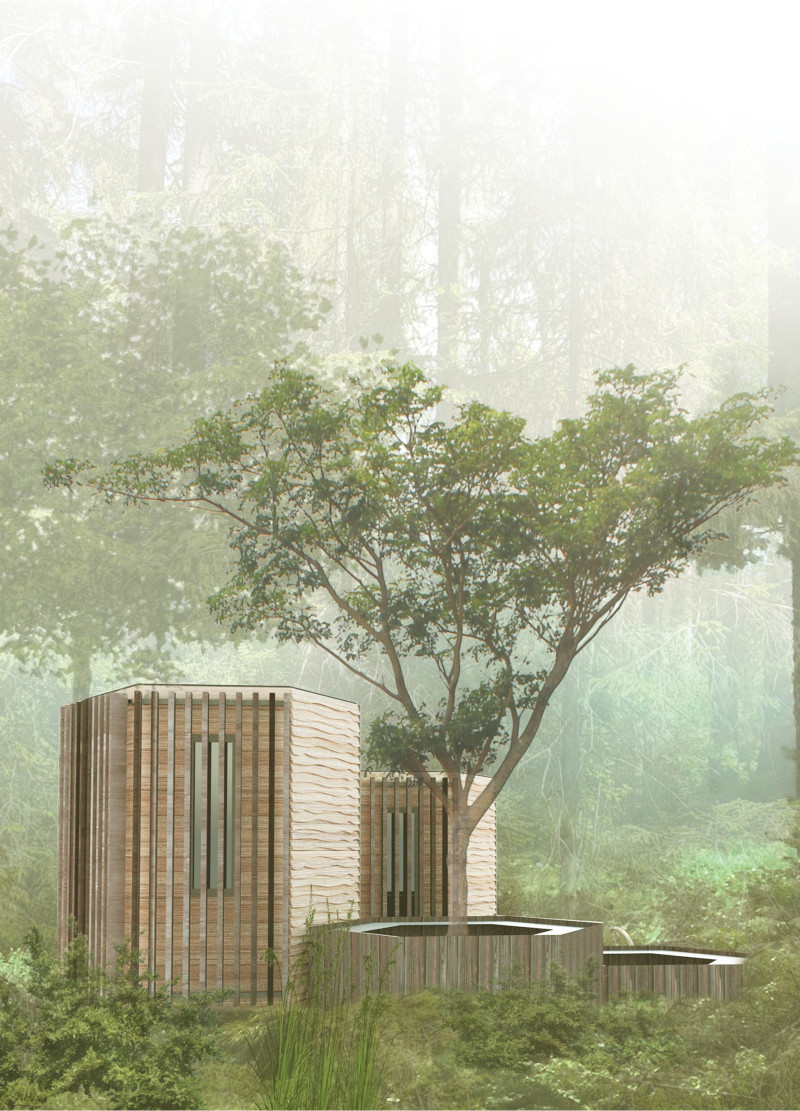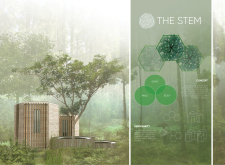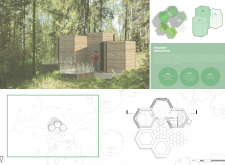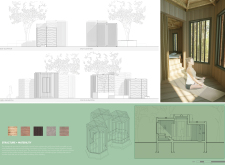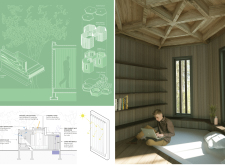5 key facts about this project
The main function of "The Stem" is to facilitate relaxation and renewal, addressing the needs of the spirit, mind, and body. The design thoughtfully organizes spaces that encourage mindfulness, creativity, and physical activity, allowing users to engage in activities such as meditation, yoga, reading, and cooking healthy meals. Each spatial arrangement is deliberately crafted to foster an environment supportive of personal growth and exploration.
Architecturally, "The Stem" adopts a hexagonal modular design, creating versatile living and working areas that can be expanded or reconfigured as necessary. This adaptability aligns with the project's concept of personal and spatial growth, resembling the organic structures found in nature, particularly the form of a tree. The emphasis on modularity allows occupants to personalize their space over time, enhancing their connection to both the cabin and the natural surroundings.
The aesthetic of the cabin is marked by its materiality, which plays a pivotal role in the overall design. Wood acts as the primary material, providing warmth and a tactile connection to the forest environment. Concrete is utilized for structural support, ensuring durability while complementing the natural elements. Generous use of glass allows natural light to flood the interiors, creating bright, airy spaces that enhance the sense of openness and connection to nature.
Unique design approaches are evident throughout the project, particularly in the use of local materials that minimize the cabin’s ecological footprint. This focus on sustainability is further reflected in the incorporation of passive solar design principles, which optimize natural heating and cooling throughout the year. The roof structure is carefully designed to capture solar energy, contributing to the cabin's energy efficiency and emphasizing the importance of renewable resources.
In terms of visual composition, the exterior of "The Stem" features a dynamic façade created by alternating wooden slats and textured surfaces, resembling the bark of a tree. This choice not only contributes to the visual dialogue with the natural surroundings but also enhances the idea of the cabin as a natural extension of its environment. Inside, the open layout allows fluid movement between spaces, encouraging both solitary and communal activities and enhancing the overall experience of living within the cabin.
The design of "The Stem" is a thoughtful exploration of architecture that prioritizes well-being, sustainability, and the user experience. Its modularity, connection to nature, and careful selection of materials illustrate a commitment to creating spaces that are not only functional but also enriching for the occupants. By engaging with the project's architectural plans, sections, and overall designs, readers can gain deeper insights into the innovative approaches and thoughtful details that characterize "The Stem." This exploration serves as an invitation to appreciate how design can nurture a sense of belonging, purpose, and connection to the natural world.


